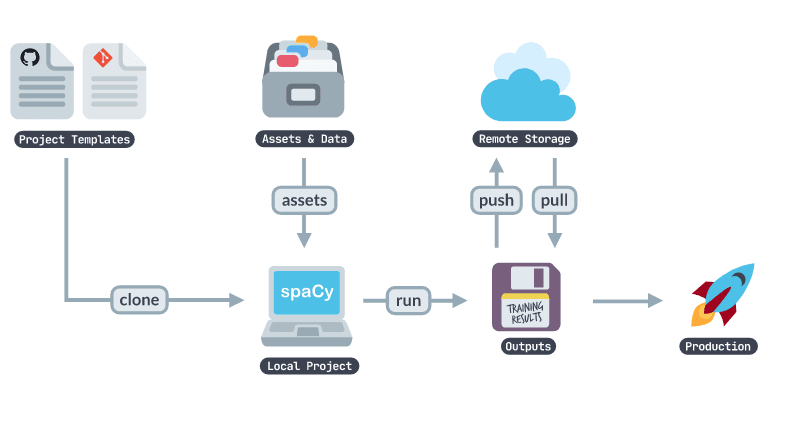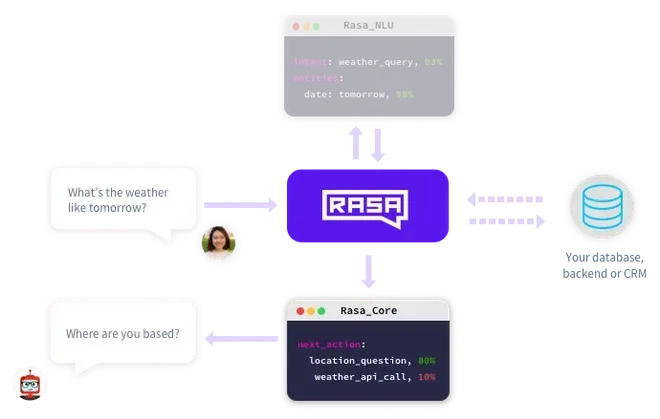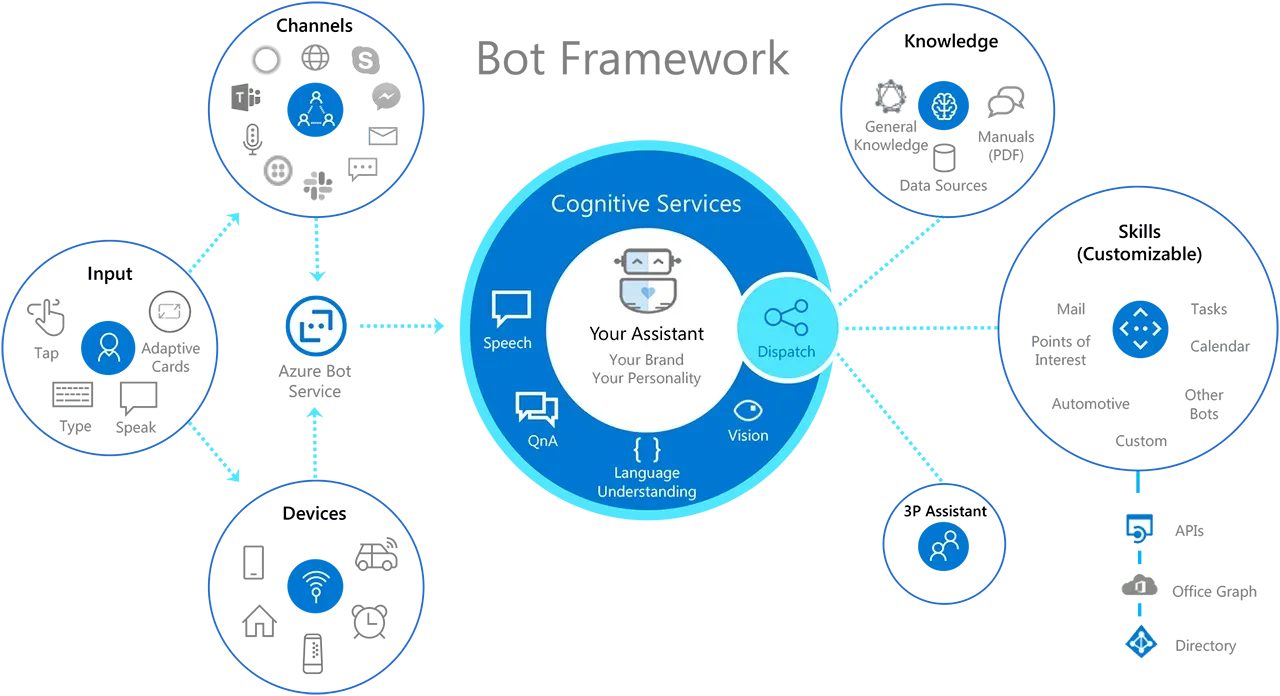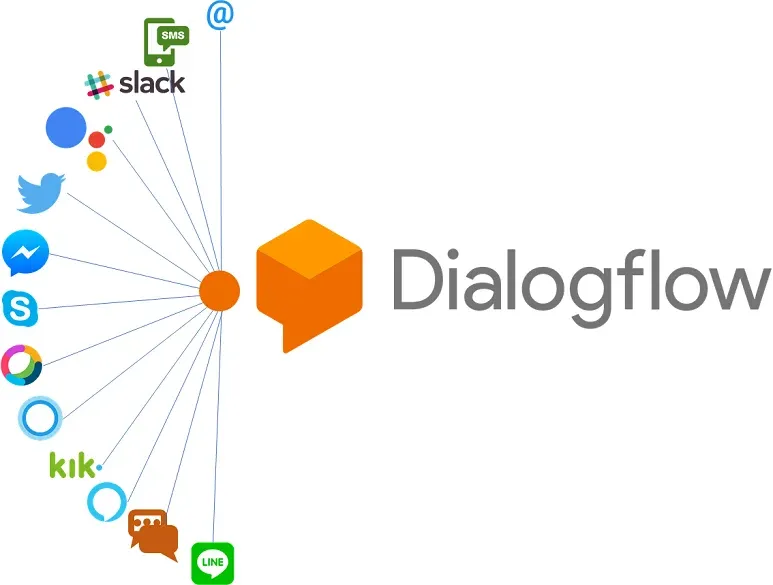Chatbots have become increasingly popular in recent years, revolutionizing how businesses interact with customers. As natural language processing (NLP) technology advances, there is a growing demand for chatbot frameworks that can seamlessly integrate with powerful NLP libraries like spaCy.
In this blog post, we'll explore some of the most promising chatbot frameworks that play well with spaCy, enabling developers to create intelligent, context-aware conversational agents.
Mordor Intelligence estimates the global chatbot market at USD 7.01 billion in 2024, and expects it to reach USD 20.81 billion by 2029. This growth is fueled by the increasing adoption of chatbots across various industries, including customer service, e-commerce, healthcare, and finance.
Rasa, an open-source conversational AI framework, is one of the most popular chatbot frameworks that integrates well with spaCy. Rasa allows developers to build contextual, multi-modal conversational AI assistants using machine learning and natural language processing.
As the demand for intelligent and contextual chatbots grows, integrating powerful NLP libraries like spaCy with chatbot frameworks will become increasingly important.
Let's learn more!
Benefits of Using spaCy With Chatbot Frameworks

By integrating spaCy with chatbot frameworks, you can leverage its powerful NLP capabilities to improve your chatbot's functionality. Here are some key benefits of using spaCy in combination with chatbot frameworks:
- Efficient NLP Processing for tasks like intent recognition and entity extraction
spaCy offers efficient NLP processing capabilities to help your chatbot understand user inputs more accurately. Tasks like intent recognition (understanding the purpose behind a user's message) and entity extraction can be performed with precision, enhancing the overall user experience.
- Streamlined workflow for chatbot development
Integrating spaCy into chatbot frameworks streamlines the development process by providing a robust NLP foundation. With spaCy's tools and functionalities readily available within the chatbot framework, developers can focus on building and enhancing the chatbot's conversational abilities without needing to reinvent the wheel when it comes to NLP tasks.
- Access to pre-trained spaCy models for various languages
spaCy offers pre-trained models for various languages, making it easier to process multilingual inputs within your chatbot. By leveraging these pre-trained models, your chatbot can effectively handle conversations in different languages, expanding its reach to a broader audience without the need for extensive training data or manual language processing setup.
Popular Chatbot Frameworks that Integrate with spaCy
Several popular frameworks offer seamless integration if you're considering integrating spaCy, a natural language processing (NLP) library into your chatbot development. Let's explore some of these frameworks and their key features.
Rasa

Rasa is another open-source chatbot framework that includes built-in support for spaCy integration. The focus of Rasa is on dialogue management and conversation design, making it a popular choice for creating robust and interactive chatbot experiences.
By leveraging spaCy within Rasa, you can enhance your chatbot's NLP capabilities for tasks like intent recognition and entity extraction. Rasa's integration with spaCy ensures accurate language processing and enables your chatbot to understand the nuances of user inputs.
Microsoft Bot Framework

The Microsoft Bot Framework is a comprehensive platform that offers seamless integration with spaCy for advanced natural language processing capabilities. This framework provides extensive tools and resources for developing intelligent chatbots across various channels, including web, mobile, and messaging platforms.
By incorporating spaCy into the Microsoft Bot Framework, you can enhance your chatbot's NLP capabilities, enabling it to understand and respond to user inputs more effectively. The combination of Microsoft Bot Framework and spaCy allows you to create intelligent and interactive chatbot experiences that deliver personalized interactions to users.
Suggested Reading:
Why BotPenguin is the best Custom Chatbot Development provider
Wit.ai

Wit.ai is a popular chatbot framework owned by Facebook that supports integration with spaCy for enhanced NLP functionality. This platform offers a user-friendly interface for building chatbots and simplifies the integration of natural language processing capabilities.
Utilizing Wit.ai alongside spaCy can empower your chatbot with advanced language understanding capabilities, such as intent recognition and entity extraction. Wit.ai's seamless integration with spaCy enables you to create sophisticated chatbot experiences that can interpret user messages accurately and provide meaningful responses.
Dialogflow

Dialogflow, a service offered by Google Cloud Platform (GCP), provides seamless integration with spaCy for advanced NLP capabilities. This platform emphasizes the use of pre-built agents and simplifies the process of integrating with other GCP services.
Integrating spaCy into Dialogflow allows you to leverage its powerful NLP capabilities to enhance your chatbot's understanding of user inputs. Dialogflow's focus on pre-built agents makes it easier to develop chatbots quickly while benefiting from spaCy's accurate language processing.
Evaluating Chatbot Frameworks Based on spaCy Integration
When evaluating chatbot frameworks that integrate with spaCy, there are a few key factors to consider. These factors can help you assess the frameworks' ease of use, functionality, and customization options. Let's explore these evaluation criteria in more detail.
Ease of Use and Setup
When considering chatbot frameworks with spaCy integration, it is important to assess their ease of use and setup process. Look for frameworks that prioritize simplicity and provide clear instructions, allowing you to set up your chatbot quickly without extensive technical knowledge.
Additionally, consider the framework's compatibility with specific spaCy versions. Ensure that the framework supports the spaCy version you intend to use for your chatbot development. Compatibility ensures smooth integration and avoids any issues arising from version differences.
Check if the frameworks provide comprehensive documentation and community support. Documentation plays a crucial role in understanding and utilizing the framework's features effectively. Community support lets you connect with other users and developers, seeking guidance or assistance whenever needed.
Functionality and Customization Options
It is important to consider the functionality and customization options offered by chatbot frameworks with spaCy integration. Assess the frameworks' support for various spaCy pipelines and components. Different spaCy pipelines and components offer specific NLP capabilities, and having access to a wide range of them within the framework enables you to process and understand user inputs more effectively.
Additionally, evaluate the framework's ability to customize spaCy processing within the chatbot. Reaching and adjusting spaCy's functionality to fit your specific chatbot requirements can significantly enhance the bot's performance and responsiveness.
Suggested Reading:
Building a Chatbot With a spaCy-integrated Framework
Choosing the right framework is essential if you're considering building a chatbot with spaCy integration. Several frameworks are available that provide seamless spaCy integration and a range of customization options, which can help you build a sophisticated chatbot with powerful natural language processing (NLP) capabilities. Let's look at a sample process of building a chatbot using a spaCy-integrated framework.
Choosing a Framework Based on Your Needs and Skill Level
The first step in building your chatbot is choosing a framework that fits your needs and skill level. Consider factors like ease of use, functionality, and customization options. Choose a framework that offers seamless spaCy integration and supports different spaCy pipelines and components.
Make sure the chosen framework aligns well with your technical understanding and resources. If you're new to chatbot development, selecting a framework that doesn't require extensive coding knowledge is essential.
And, on second thoughts, you need not go the long way to create smart AI chatbots when you can create your own AI chatbots in just a few clicks!
Because if you want to create a chatbot but have no clue about how to use language models to train your chatbot, then check out the NO-CODE chatbot platform, named BotPenguin.
With all the heavy work of chatbot development already done for you, BotPenguin allows users to integrate some of the prominent language models like GPT 4, Google PaLM, and Anthropic Claude to create AI-powered chatbots for platforms like:
- WhatsApp Chatbot
- Facebook Chatbot
- Wordpress Chatbot
- Telegram Chatbot
- Website Chatbot
- Squarespace Chatbot
- Woocommerce Chatbot
- Instagram Chatbot
- Shopify Chatbot
Setting up the Framework and Integrating spaCy
Once you've chosen your framework, follow the setup instructions provided by the framework documentation. Choose the spaCy version that you aim to use and ensure that it's compatible with the selected framework.
Integrating spaCy into the framework is one of the essential steps in building a spaCy-powered chatbot. Most frameworks offer in-built support for integrating spaCy, allowing you to enhance your chatbot's NLP capabilities. Consider customizing spaCy's processing to refine the chatbot's interpretation of user inputs.
Training the Chatbot Model with spaCy-powered NLP Tasks
Training the chatbot model involves teaching it to recognize user intents and entities through NLP tasks using spaCy. These NLP tasks help the chatbot understand user inputs and provide accurate responses. The framework's documentation should include detailed information about training the chatbot model using spaCy.
Consider using pre-built NLP models provided by spaCy, which simplify the chatbot training process. Fine-tune the pre-built model to match your chatbot's domain and requirements.
Testing and Iterating on the Chatbot
After training the chatbot, it's important to test its functionality and responsiveness to different user inputs thoroughly. Use the testing tools provided by the framework or external testing tools to check the chatbot's performance.
Based on the testing results, iterate and refine the chatbot as necessary to improve its performance and accuracy. Iterate on the model repeatedly to enhance its understanding of user inputs.
Advanced Topics: Extending Chatbot Functionality with spaCy
Once you have built a basic chatbot, you can explore advanced topics to extend its functionality further using spaCy:
Customizing spaCy pipelines for specific chatbot tasks
Explore customizing the spaCy pipeline components to suit your chatbot's specific needs. Adjusting the pipeline can optimize the chatbot's language processing and improve its accuracy.
Utilizing spaCy for Sentiment Analysis and User Profiling
Leverage spaCy's capabilities for sentiment analysis to enhance the chatbot's understanding of user emotions. Additionally, spaCy can be utilized for user profiling, extracting valuable information to provide personalized responses.
Integrating spaCy with Other NLP Libraries for Advanced Capabilities
Consider integrating spaCy with other NLP libraries or tools to unlock additional advanced capabilities. This integration allows you to leverage a broader range of NLP functionalities to enhance your chatbot's performance.
Conclusion
In conclusion, integrating chatbot frameworks with powerful NLP libraries like spaCy is becoming increasingly crucial as businesses strive to provide customers with personalized and context-aware conversational experiences.
As businesses increasingly recognize the value of conversational AI in enhancing customer experiences, the demand for user-friendly yet powerful chatbot frameworks like BotPenguin is likely to grow. By combining ease of use with advanced NLP capabilities through its integration
With the rapid advancements in NLP and AI technologies, we can expect to see even more innovative and sophisticated chatbot solutions emerge soon. These solutions will further revolutionize the way we interact with machines and enable businesses to deliver exceptional customer experiences at scale.
Suggested Reading:
Building a ChatGPT Clone With BotPenguin: Step-by-Step Guide
Frequently Asked Questions (FAQs)
Which chatbot frameworks integrate well with spaCy?
Some popular chatbot frameworks that integrate well with spaCy are Rasa, Botpress, Microsoft Bot Framework, Dialogflow, and IBM Watson Assistant.
What advantages does spaCy integration offer in chatbot development?
Integrating spaCy with chatbot frameworks enhances natural language processing capabilities, including entity recognition, part-of-speech tagging, and dependency parsing. This leads to more accurate and efficient conversation handling.
How can Rasa be integrated with spaCy?
Rasa provides seamless integration with spaCy through its spacy_nlp pipeline component. By adding this component to your Rasa project, you can leverage spaCy's linguistic features for improved chatbot interactions.
Does Botpress support spaCy integration?
Yes, Botpress supports spaCy integration. The Botpress ecosystem offers ready-to-use NLU modules that utilize spaCy for entity extraction and language understanding, enabling smooth integration between the two.
Can spaCy be used with Dialogflow or IBM Watson Assistant?
While Dialogflow and IBM Watson Assistant have their own built-in NLU capabilities, it's possible to enhance their functionality by integrating spaCy. This integration can enhance language understanding and provide additional NLP capabilities.


